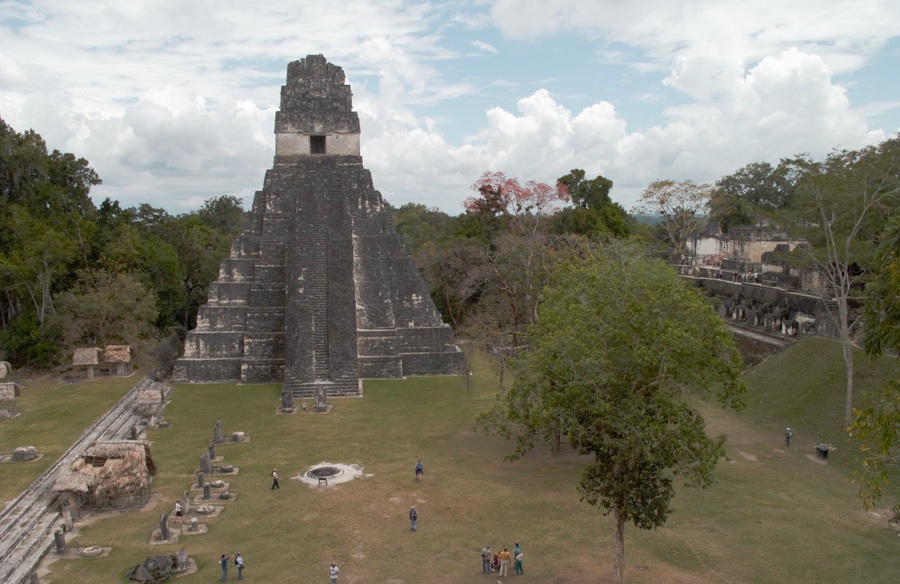The next day we traveled to Tikal. This trip was my 3rd to Tikal; the 1st trip being in March 2006 and the 2nd trip being in March 2007. Sadly, I did not take any photos on those trips, so I only have my fading memories and references to other people’s photos of those trips to offer.
Tikal is 1 of the 3 main Mayan cities, the 3 cities of Light along with Palenque and Copan (see MYSTERIES OF THE CRYSTAL SKULLS REVEALED by Sandra Bowen, F. R. “Nick” Nocerino and Joshua Shapiro, 1988, ISBN 0-929781-26-0, pages 126-127; and THE BOOK OF KNOWLEDGE: The Keys Of Enoch, by J.J. Hurtak, pages 305-317, especially pages 310-312 and the map on page 311). I found Tikal be very geometric and hard, lacking the soft curves and flowing feeling of Palenque and Copan. Tikal also feels like the balancing point between all of the Mayan cities, the hub of their culture.
According to the LONELY PLANET GUIDE to GUATEMALA, 2nd Edition, January 2004, ISBN 1-74059-293-X, pages 258-259, the Maya settled Tikal around 700 B.C. Within 200 years the Maya had begun to build stone ceremonial structures, and by 200 B.C. they created a complex of buildings at the North Acropolis. The Maya started building the Grand Plaza as it looks today around the time of Christ. By the early Classic Period (circa 250 A.D.), Tikal was an important religious, cultural, and commercial city with a large population. Archaeologists consider King Yax Moch Xoc, who came to power around 230 A.D., as the founder of the dynasty that ruled Tikal onwards. Tikal adopted Teotihuacan’s brutal warfare methods during the mid-4th Century reign of King Great Jaguar Paw. Tikal’s army defeated the army of Uaxactun, becoming the dominant kingdom in El Peten. By the mid-6th Century, Tikal covered over 30 square kilometers and had a population of about 100,000. Around 562 A.D., Lord Water of the rival city of Caracol defeated Tikal and sacrificed Tikal’s ruler. Caracol ruled Tikal until the late 7th Century. In 695 A.D. , King Moon Double Comb (682-734) defeated rival city Calakmul and restored Tikal’s military strength and primacy in the Mayan world. The Mayans buried King Moon Double Comb under Temple I. Around 900 A.D., Tikal collapsed, along with most of the other Mayan cities of the time.





